According to the Wolfram model, the universe is a hypergraph.
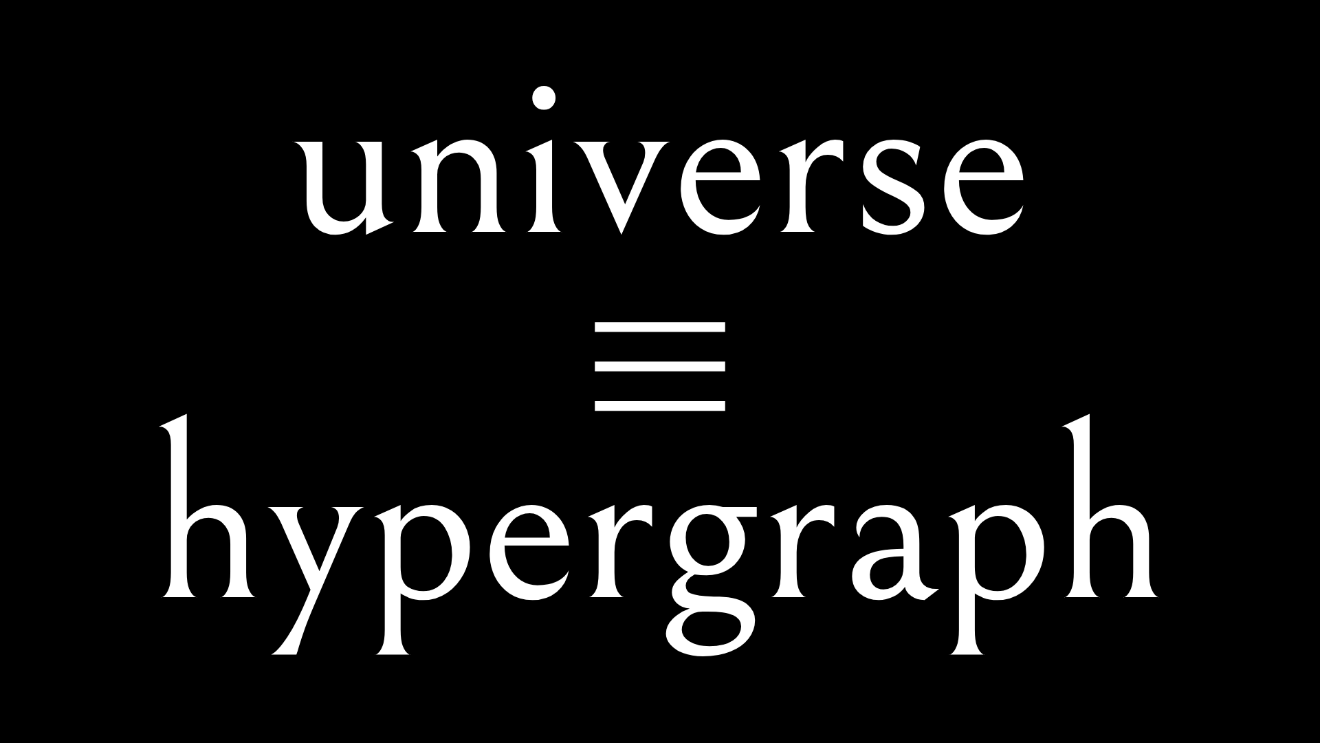
So here’s how the Big Bang might look:
You can see the universe explode into existence, expanding into... well, expanding into what?
It’s a question I’m asked a lot:
What’s that blank space the hypergraph’s expanding into?
And here’s another question I’m asked a lot.
What’s that blank space between the nodes and edges of the hypergraph?
These two questions are asking the same thing: what’s beyond the hypergraph?
And if the hypergraph is the universe, what they’re really asking is: what’s beyond the universe?
There’s a simple answer to this question.
Nothing.
There’s nothing beyond the hypergraph.
There’s nothing beyond the universe.
But it’s not a very effective answer.
When I tell people who ask what the hypergraph is expanding into that it’s not expanding into anything, or when I tell people who ask what’s between the nodes and edges of the hypergraph that there’s nothing between the nodes and edges, they’re not very satisfied with my answer.
When I say nothing, they’re inclined to say that there’s no such thing as nothing, or that even nothing is something.
So I’m going to try a different answer.
Here’s a deeper response to the age-old question:
What’s beyond the universe?
Creatures of space
We are creatures of space.
Specifically, we’re creatures of three-dimensional space.
When we look at the world, we see things in space.

We see the road beneath our feet.
We see the fields either side of us.
We see the sky over our heads.
As we watch things move through space, we recognize that there are three fundamental directions:
- left-right;
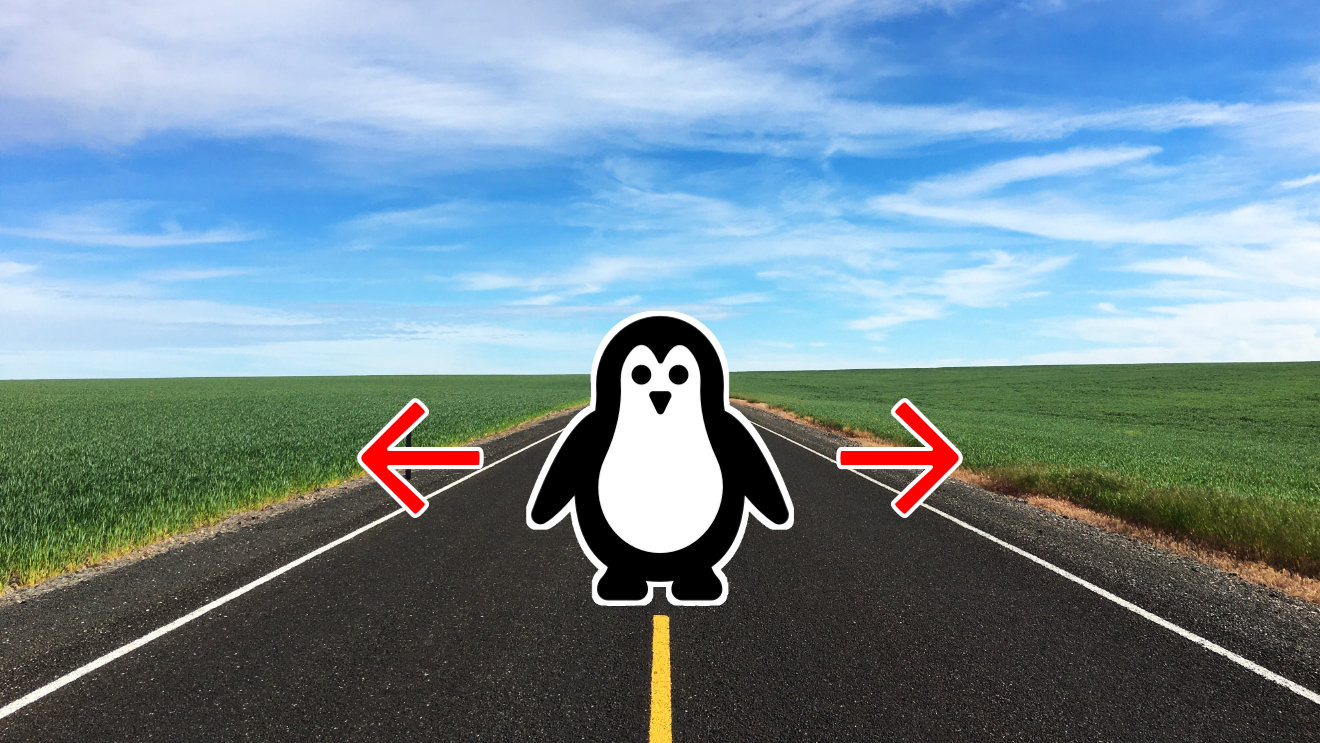
- up-down;
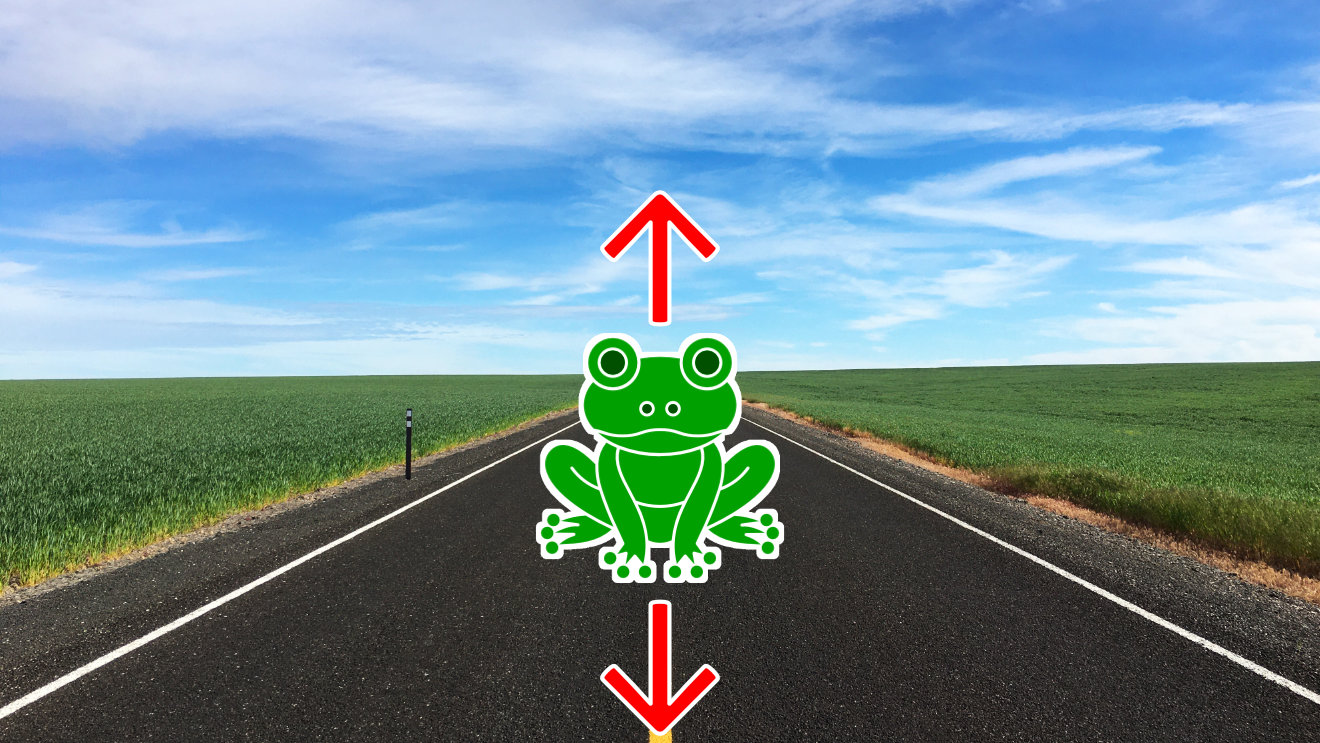
- forwards-backwards.

In her book Mind in Motion, the psychologist Barbara Tversky argues that we learn about three-dimensional space by moving through it.
Indeed, she suggests that our concept of space is so fundamental to our thinking that when we arrange ideas in our minds, we lay them out in space.
(This, incidentally, is why I’m so obsessed with the Open Web Mind, which will mimic our minds by laying out ideas in space.)
Whether we’re looking out at the world or into our minds, we are creatures of space.
Living on the edge
For most of history, physicists have taken space as a given.
It’s the three-dimensional coordinate system that allows us to place every penguin and every frog at a specific position.
But this idea of space as a coordinate system begs a question.
Does space go on forever?
In other words, is space infinite?
Or does space stretch only to the edges of the world?
In other words, is it finite?
And if it’s finite, what’s beyond the edges of the world?

Great circle
Back in the days before we realized that the Earth is round, this was a question that we had to answer.
If the Earth is flat, does it go on forever?
Or does it stretch only to the edges of the world?
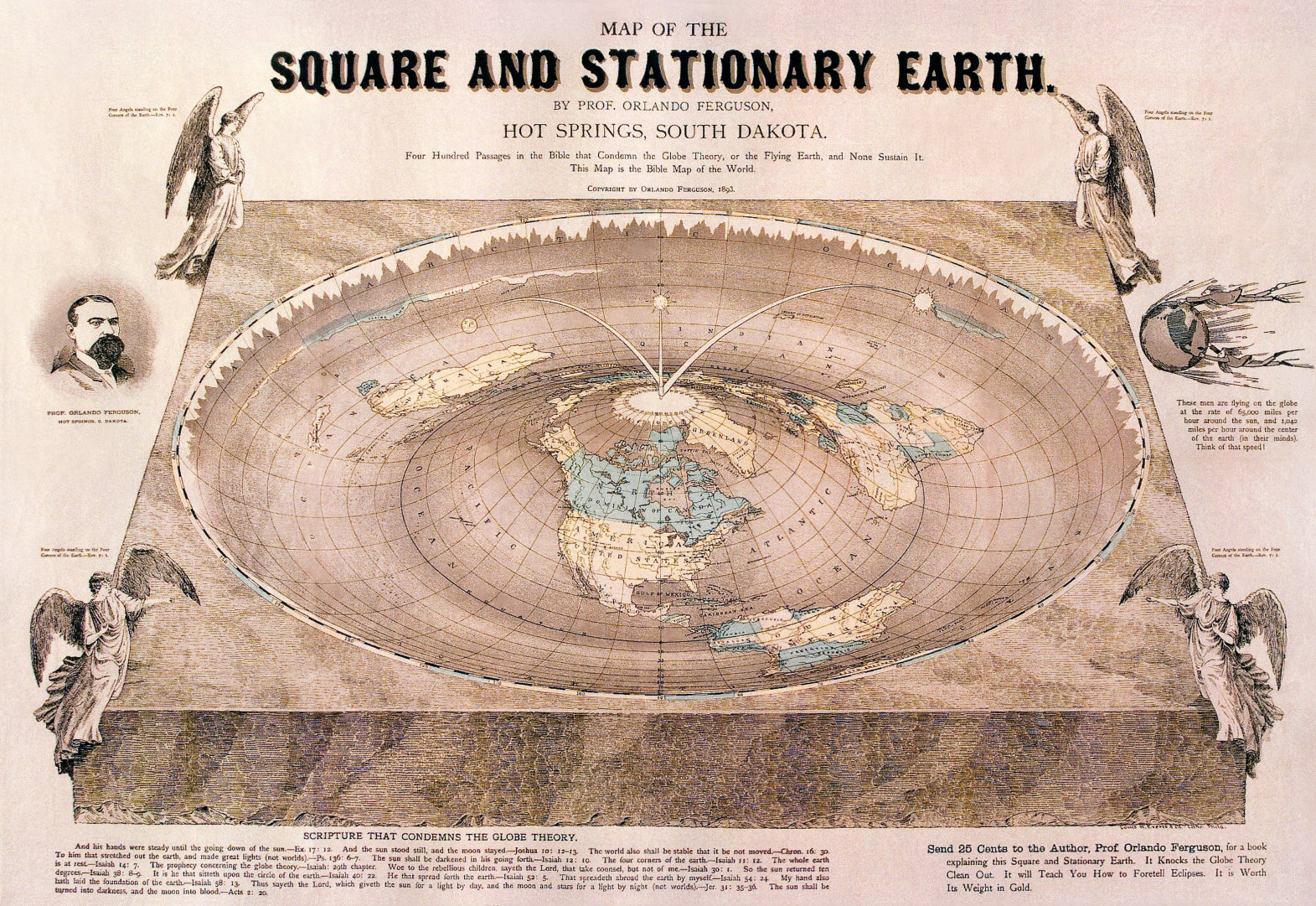
And if it’s only to the edges of the world, what do those edges look like?
Are there waterfalls where the oceans spill over the edges?
Are there ice cliffs that hold the oceans in place?
If so, what’s beyond those waterfalls or ice cliffs?
What’s beyond the edges of the Earth?
We solved this mystery when we realized that the Earth is round.
It’s not that we answered these questions.
It’s that these questions just went away.
We no longer ask whether there are waterfalls or ice cliffs at the edges of the Earth, or what’s beyond them, because we now know that there are no edges of the Earth.
Wherever you are on the Earth, if you keep on walking or swimming or flying in a straight line, you’ll eventually, after 25 thousand miles or so, end up right back where you started.
There are no edges.
Wrap around
Back in the days before we realized that the universe is round, we still had to answer the question of what’s beyond the edges of the world.
If, instead of walking or swimming or flying from wherever you are on the Earth, you take a rocket straight upwards into outer space, and keep going and going and going, well, then what?

Does outer space go on forever?
Or does it stretch only to the edges of the universe?
And if it’s only to the edges of the universe, what do those edges look like?
Are there celestial waterfalls?
Are there cosmic ice cliffs?
If so, what’s beyond the celestial waterfalls or the cosmic ice cliffs?
What’s beyond the edges of the universe?
Again, we solved this mystery when we realized that the universe is round.
Specifically, the three dimensions of space, combined with the dimension of time, form a four-dimensional space-time that’s curved into a hypersphere.
It’s the same as the two-dimensional surface of the Earth being curved into a sphere, only with more dimensions.
Except that it’s easy for us, as creatures of three-dimensional space, to visualize the two-dimensional surface of the Earth curved into a sphere in three-dimensional space.
It’s more difficult for us to visualize four-dimensional space-time curved into a hypersphere in a putative five-dimensional space.
Still, if we can wrap our minds around it, we find that the consequences of this curvature of four-dimensional space-time are exactly the same as the consequences of the curvature of the two-dimensional surface of the Earth.
Again, it’s not that we answered the questions of whether there are celestial waterfalls or cosmic ice cliffs at the edges of the universe and what’s beyond them.
It’s that these questions just went away, because we now know that there are no edges of the universe.
Just as walking or swimming or flying on the Earth eventually, after 25,000 miles or so, brings you right back where you started, so taking a rocket straight upwards eventually, and after 300 billion light years or so, brings you right back where you started.
Imaginary spaces
Regardless of this lack of edges, we still ask what’s beyond the universe.
We just can’t help ourselves.
When we visualize space-time as a four-dimensional hypersphere in a five-dimensional space...

...we ask ourselves what’s outside the hypersphere.
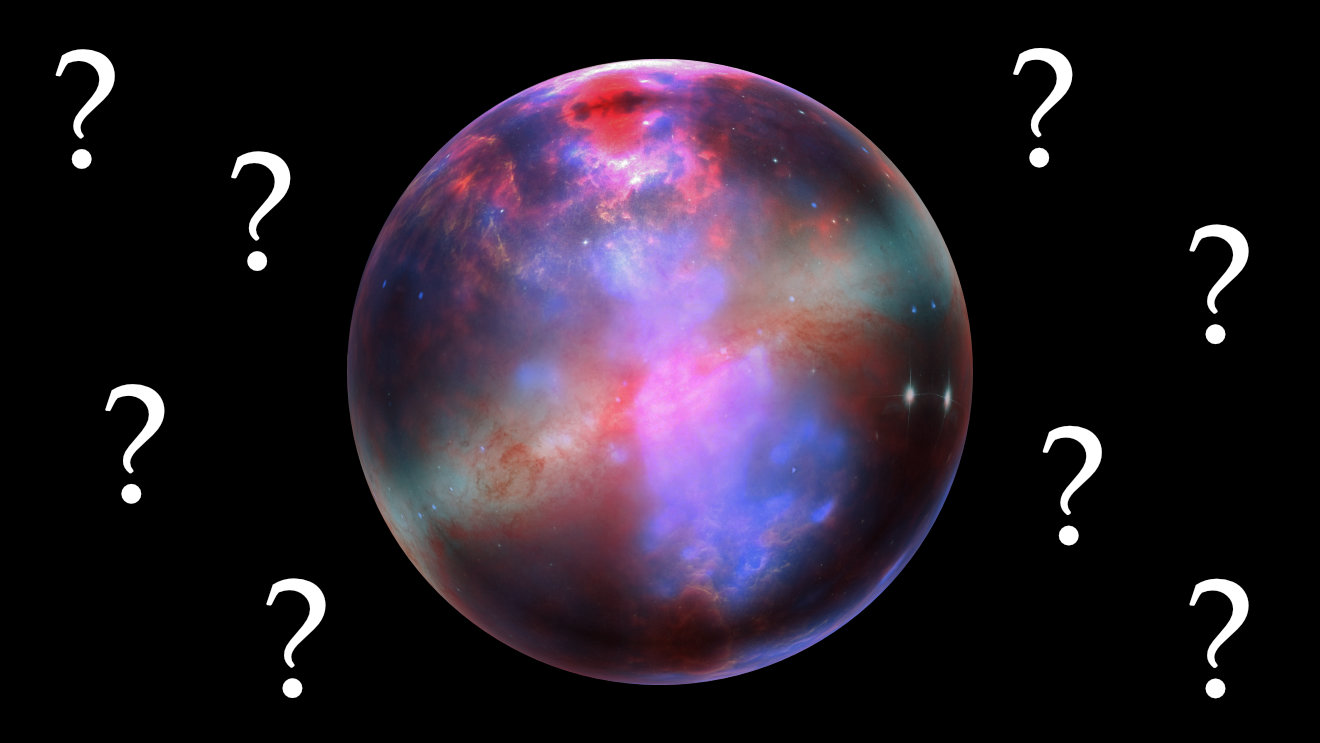
Here’s where the analogy between the curvature of the Earth and the curvature of space-time breaks down.
The three-dimensional space the Earth is in is real.

Sure, if all we ever do is walk or swim or fly, we’ll never leave the two-dimensional surface of the Earth. We might swim 10 thousand feet beneath the ocean or fly 10 thousand feet above the land, but we’re forever trapped in the two-dimensional spherical shell of the Earth’s hydrosphere and atmosphere.
But if we build a rocket, we can escape the Earth’s surface, and voyage into the three-dimensional space beyond.
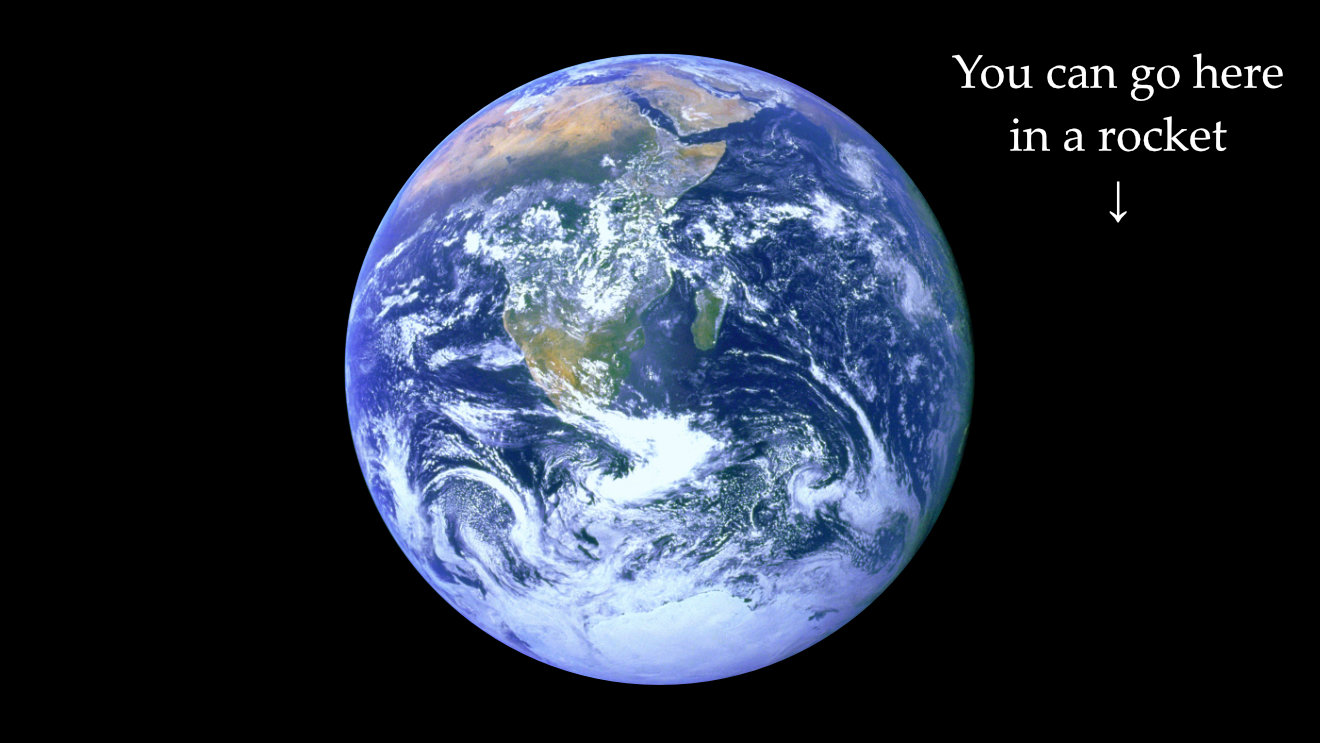
The five-dimensional space the universe is in, however, is not real. It’s just a way of visualizing the curvature of four-dimensional space-time.
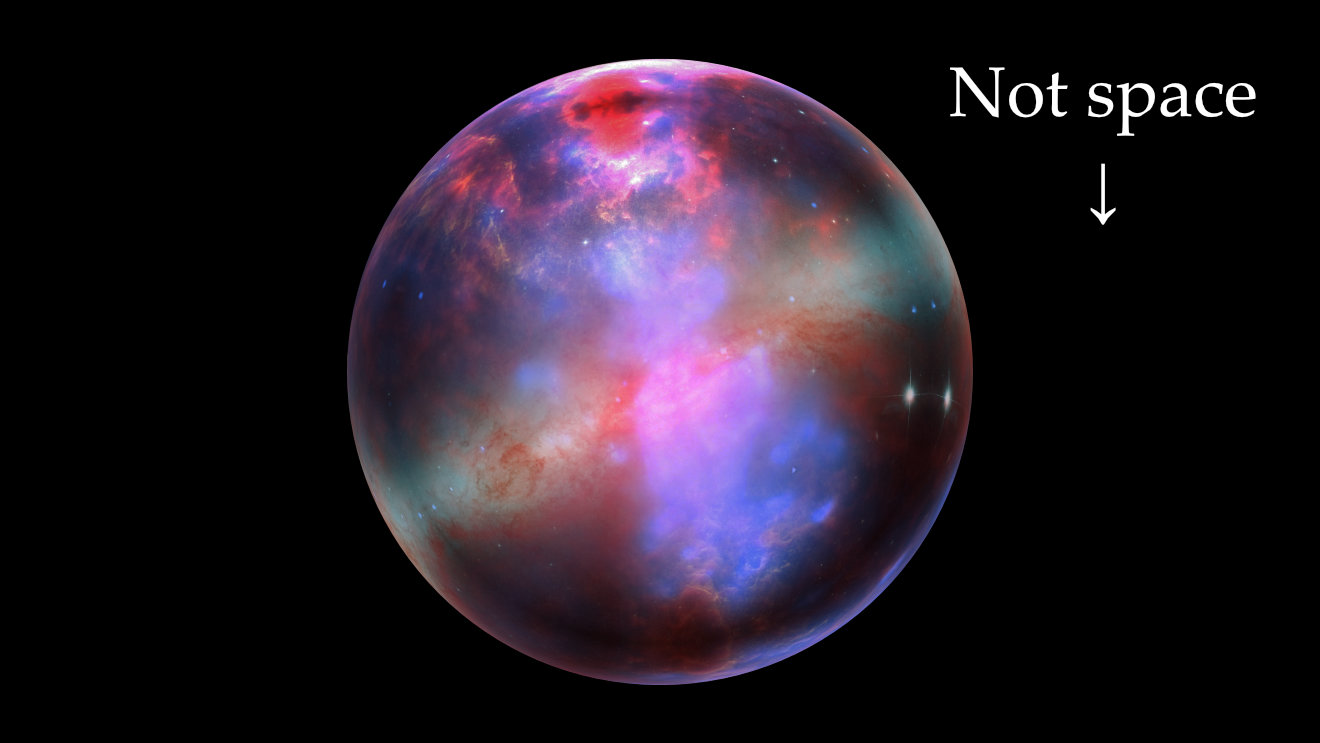
It’s not that we lack the technology to escape four-dimensional space-time. It’s that four-dimensional space-time is all there is.
The five-dimensional space we use to visualize the curvature of space-time exists only in our imaginations. We can’t build a hyperrocket to take us there, any more than we can build a cyclone-driven house to take us to the Land of Oz.
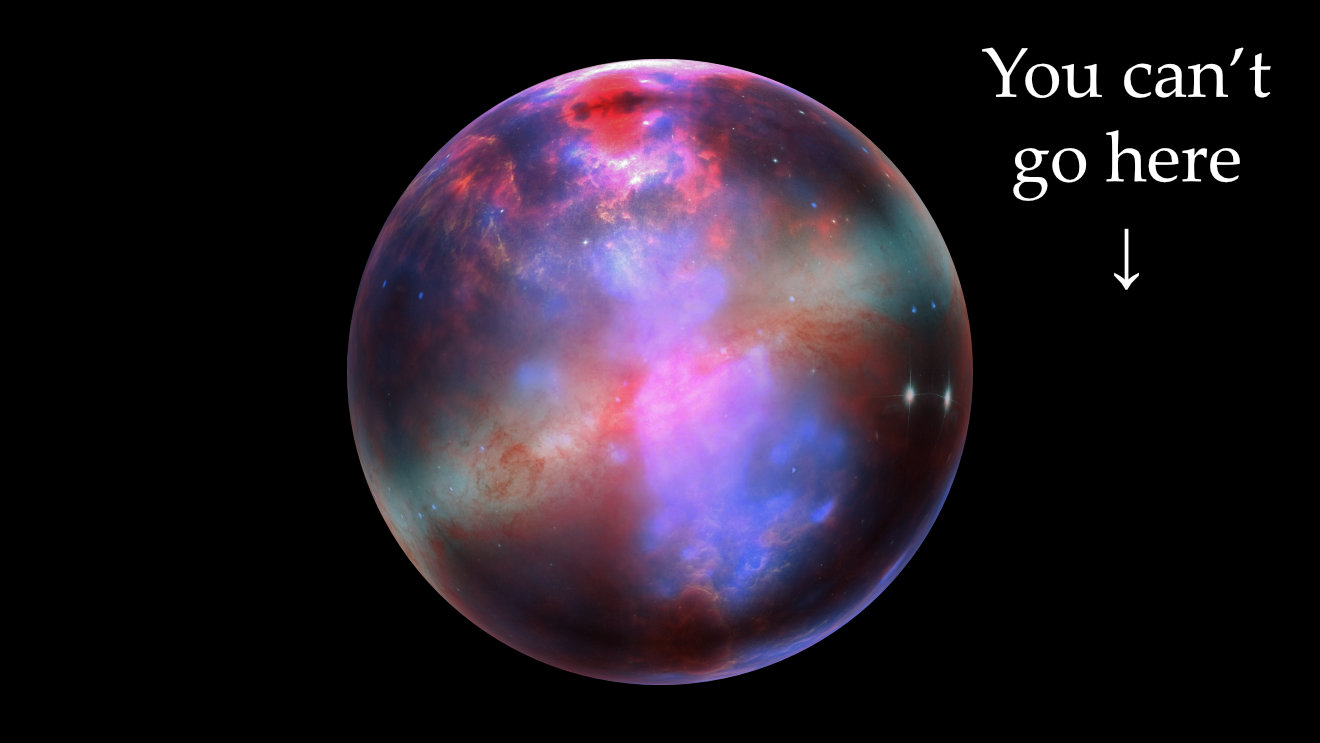
Which came first, the fried chicken or the fried egg?
Of course, just because a space is imaginary, it doesn’t mean that we can’t picture things in it.
The Land of Oz is imaginary, but we can still picture a yellow brick road in it.
The five-dimensional space we use to visualize the curvature of space-time is imaginary, too, but we can still picture fried eggs in it.
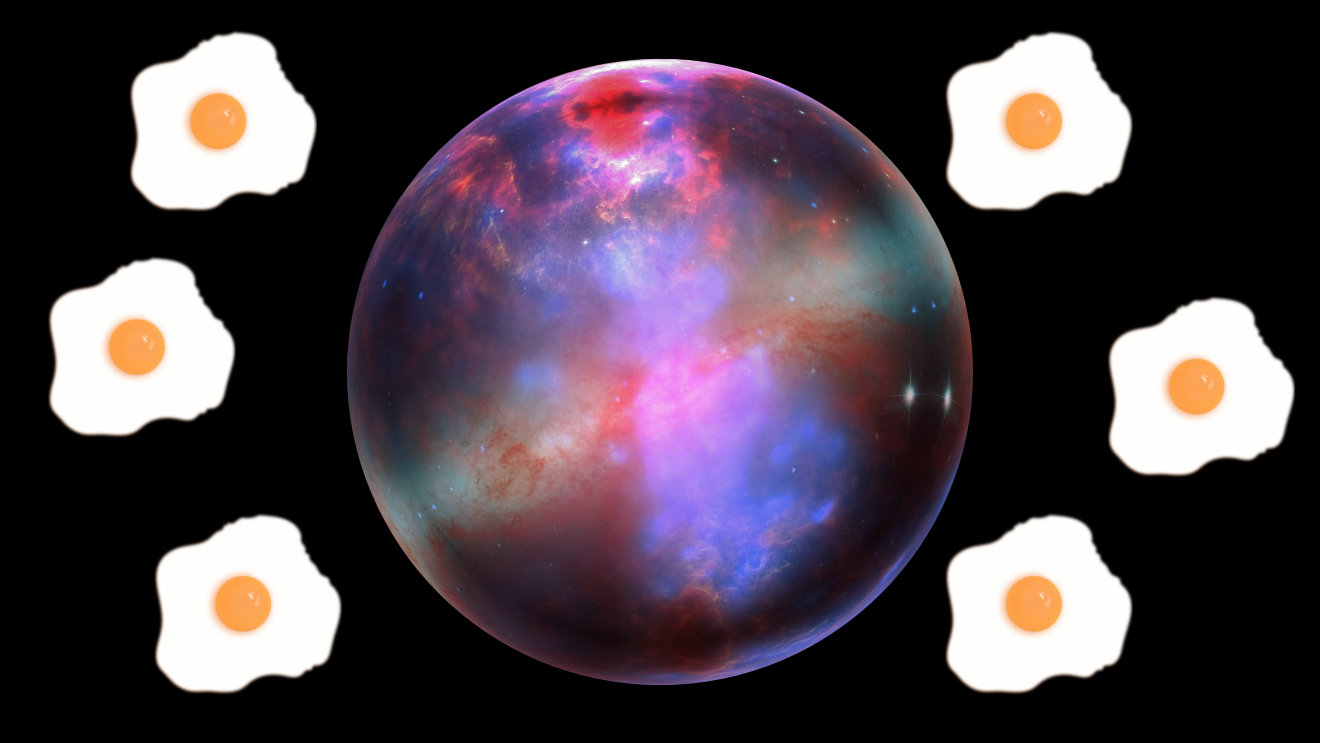
I mean, why not?
This five-dimensional space beyond the universe doesn’t exist, so why not speculate that it’s splatted with fried eggs?
After all, we can never go there, so you’ll never be able to prove that there aren’t fried eggs there.
And there’s the rub.
Sure, we can speculate on the existence of things outside the universe, but if we can never go to where they are, if we can never see them with our eyes or sense them with our instruments, if they can never influence us in any way, then it’s pretty meaningless to say that they exist.
If I say they do exist, you can never prove me wrong.
If I say they don’t exist, I can never prove myself right.
The statement that there are fried eggs in the five-dimensional space beyond the universe isn’t a falsifiable scientific theory.
It’s an unfalsifiable philosophical speculation.
We are the world
According to the Wolfram model, the universe is a hypergraph.

If Stephen Wolfram is right, everything we can see and sense – all space, all time, all matter – consists of the nodes and edges of the evolving hypergraph.
The trouble is, we have to visualize the hypergraph somehow, if we want a picture of the universe or a moving picture of how it evolves.
And the way we do that is by drawing the nodes and edges in a two- or three-dimensional space.
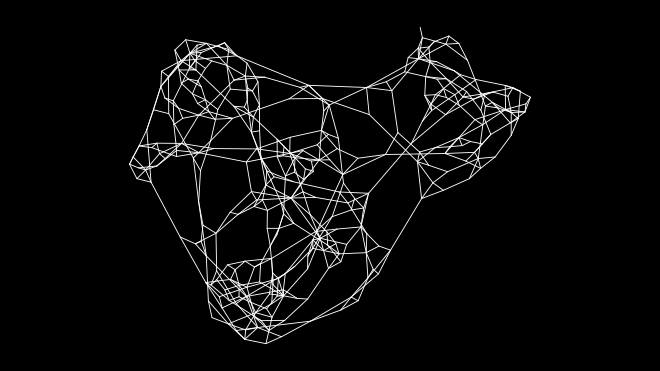
Why a two-dimensional space? Well, because our screens are two-dimensional, so drawing a hypergraph in a two-dimensional space works well on our screens.
Why a three-dimensional space? Well, because we’re creatures of three-dimensional space, so drawing a hypergraph in a three-dimensional space makes sense to our minds, even if we render that three-dimensional space on a two-dimensional screen.
But just like the five-dimensional space in which we visualize the hyperspherical universe, the two- or three-dimensional space in which we draw the hypergraph is imaginary.
It exists on our screens.
It does not exist in reality.
So sure, we can speculate that there are fried eggs beyond the hypergraph in this imaginary two- or three-dimensional space.
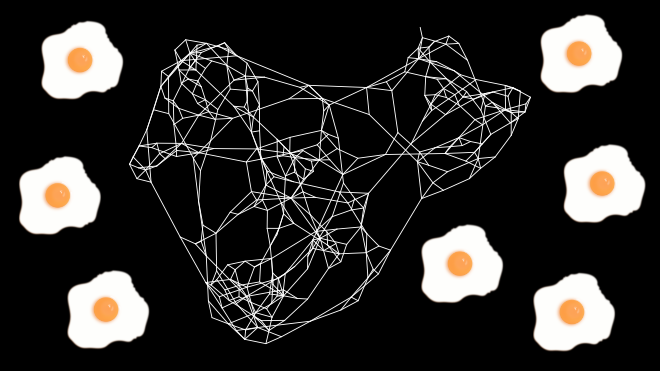
And sure, we can speculate that there are fried eggs between the nodes and edges of the hypergraph in this imaginary two- or three-dimensional space.
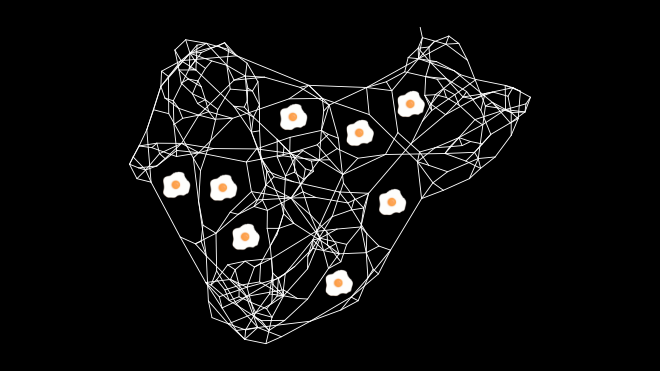
But we can never see or sense these fried eggs, because we, too, consist of the nodes and edges of the evolving hypergraph, as do our instruments, as do the photons that might allow us or our instruments to see or sense those fried eggs.
We can’t see or sense beyond or between the nodes and edges of the hypergraph, because we are the nodes and edges of the hypergraph.
We’re forever trapped in the hypergraph, not in the same way that penguins and frogs are trapped on the two-dimensional surface of the Earth, because they can’t build rockets, but in the same way that space-penguins and space-frogs are trapped in four-dimensional space-time, because four-dimensional space-time is all there is.
Nothing seems to be the hardest word
So here’s my deeper response to the age-old question.
What’s beyond the hypergraph?
What’s between the nodes and edges of the hypergraph?
If Stephen Wolfram is right, and the universe is a hypergraph, then there’s no meaningful answer to that question.
Sure, I could say that there’s nothing beyond the hypergraph, nothing between the nodes and edges.
But that’s like saying that there are fried eggs beyond the hypergraph, fried eggs between the nodes and edges.
Whatever I say, I can never prove myself right, and you can never prove me wrong.
If we’re willing to stray into unfalsifiable philosophical speculation, we can say whatever we like about what’s beyond the hypergraph.
But if we’d prefer to stick with falsifiable scientific theory, then there’s no meaningful answer.
What’s beyond the universe?
It’s not so much that the answer is nothing.
It’s that it’s a question to which there are no verifiably right answers and no verifiably wrong answers.
Which means that it might not be a meaningful question to ask.